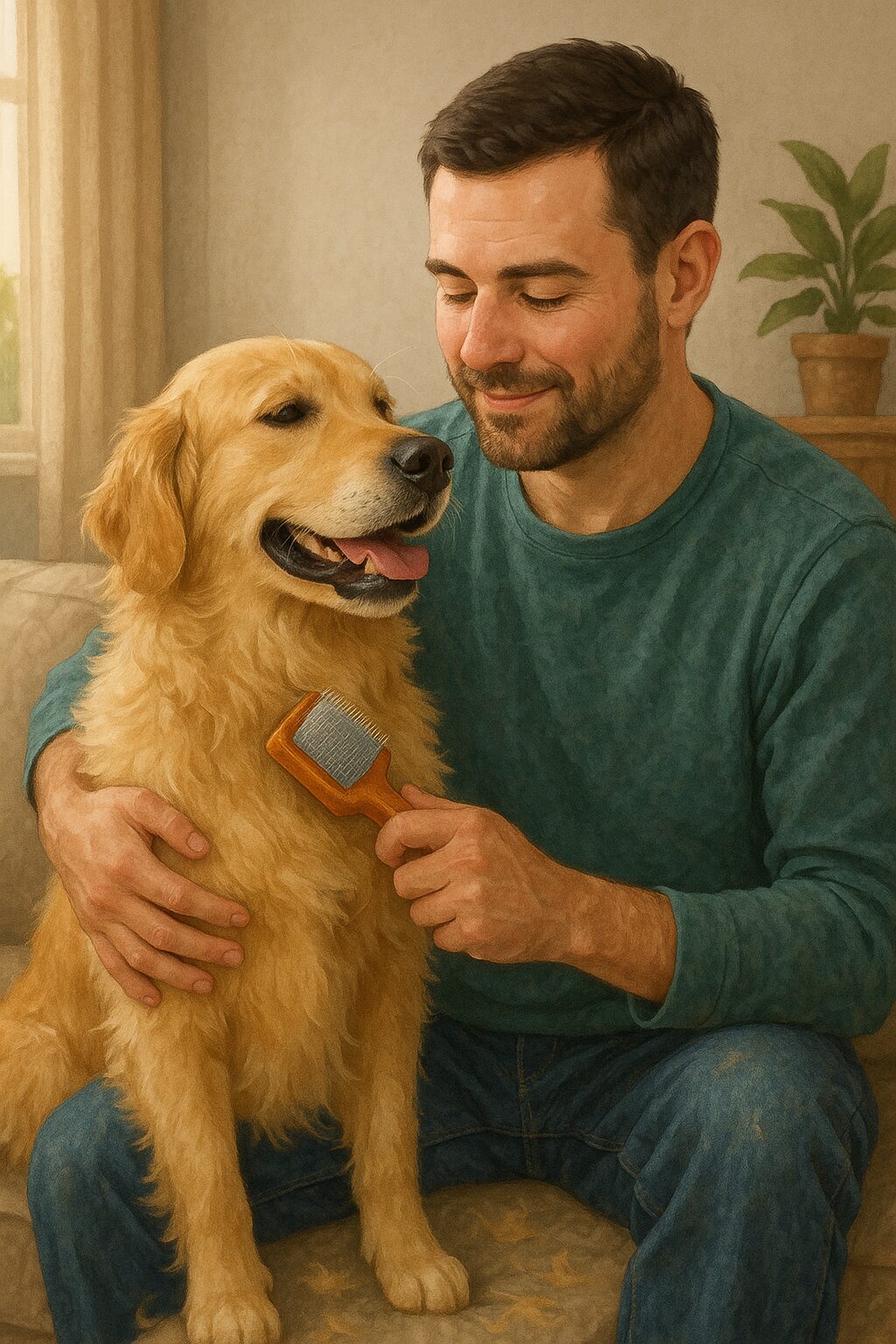If you’re constantly vacuuming fur, lint-rolling clothes, or pulling dog hair out of your coffee mug — you’re not alone. Shedding is a normal part of dog ownership, but that doesn’t mean you’re powerless against it. With the right grooming habits and care, you can manage shedding effectively and keep your dog’s coat (and your home) healthy and clean.
In this article, you’ll learn why dogs shed, which breeds shed more, and how to reduce shedding through grooming, diet, and smart routines.
Why dogs shed
Shedding is a natural process that allows your dog to get rid of old or damaged hair. Most dogs shed year-round to some extent, but seasonal shedding often increases in spring and fall.
Factors that affect shedding:
- Breed type
- Length and texture of the coat
- Season and temperature changes
- Diet and hydration
- Stress or anxiety
- Health issues (like skin conditions or parasites)
Understanding the reason behind your dog’s shedding helps determine the best way to manage it.
Breeds that shed more (and less)
Some breeds are notorious for shedding — especially double-coated dogs. Knowing where your dog falls on the spectrum helps set expectations.
Heavy shedders:
- Labrador retrievers
- German shepherds
- Golden retrievers
- Huskies and malamutes
- Corgis
- Akitas
- Beagles
Low shedders:
- Poodles
- Shih Tzus
- Maltese
- Bichon frise
- Schnauzers
- Portuguese water dogs
Keep in mind: low-shedding dogs still require grooming — sometimes even more than heavy shedders.
Brushing is your best friend
The most effective way to reduce loose hair in your home is regular brushing. It helps remove dead fur before it falls out and keeps your dog’s coat healthy.
Tips for brushing:
- Brush 3–4 times a week, or daily during shedding seasons
- Use the right brush for your dog’s coat type (slicker, bristle, rake, or deshedding tool)
- Brush outside to keep fur out of your home
- Be gentle, especially with long-haired or sensitive dogs
- Finish with a soft brush to smooth and distribute oils
If your dog resists brushing, introduce it slowly with praise and treats. Make it a positive experience, not a chore.
Use deshedding tools
Deshedding tools like the Furminator are designed to reach the undercoat and remove loose hair without damaging the top layer.
- Use during heavy shedding periods (spring/fall)
- Don’t overuse — 1–2 times a week is usually enough
- Avoid on short-coated breeds with sensitive skin
- Always follow up with a soothing brush or massage
Deshedding sessions may seem intense at first, but they significantly reduce the amount of fur in your house.
Bathe your dog regularly (but not too often)
Bathing helps loosen dead hair and reduce dander. It also removes dirt and allergens that can irritate the skin and cause excessive shedding.
Tips:
- Bathe your dog every 4–8 weeks, depending on breed and lifestyle
- Use a dog-specific shampoo — never human shampoo
- For heavy shedders, try a deshedding shampoo and conditioner
- Rinse thoroughly to avoid buildup or irritation
- Dry completely — a wet coat can lead to matting or bacteria growth
Overbathing can dry out your dog’s skin, so always follow your vet’s or groomer’s advice.
Keep their skin healthy
Healthy skin equals a healthier coat. Support skin health by:
- Brushing regularly to distribute natural oils
- Providing omega-3 and omega-6 fatty acids (via diet or supplements)
- Avoiding harsh chemicals, shampoos, or fragrances
- Treating fleas or ticks promptly
- Using a humidifier in dry climates
If you notice flaking, scabbing, bald spots, or sores, talk to your vet. Skin issues can increase shedding dramatically.
Feed a balanced diet
What your dog eats shows in their coat. A poor-quality diet can lead to dull fur, itchiness, and excessive shedding.
For a shiny, strong coat:
- Choose high-quality dog food with animal-based proteins
- Look for added omega-3s, zinc, and vitamin E
- Avoid fillers like corn, soy, and by-products
- Add a fish oil supplement (if approved by your vet)
Hydration is just as important — ensure fresh water is always available.
Schedule professional grooming
If your dog has a thick or high-maintenance coat, regular visits to a groomer can make a huge difference.
Groomers can:
- Deep-clean the coat
- Remove excess undercoat
- Trim or thin heavy fur
- Spot early signs of skin issues
- Offer breed-specific grooming advice
Some breeds (like poodles or doodles) benefit from grooming every 4–6 weeks.
Keep your home cleaner, too
While grooming helps a lot, shedding can still linger. Manage fur in your home by:
- Using washable furniture covers
- Vacuuming with a pet-hair attachment
- Brushing your dog outside
- Using lint rollers or pet hair removers
- Keeping air filters clean (fur and dander can clog them fast)
Creating a “dog zone” with easy-to-clean flooring or blankets can help contain the mess.
When shedding is a red flag
While shedding is normal, sudden or extreme shedding can be a sign of a deeper issue.
Contact your vet if you notice:
- Bald patches or thinning hair
- Red or inflamed skin
- Excessive scratching or licking
- Change in appetite or behavior
- Shedding that doesn’t improve with grooming or diet
Conditions like hypothyroidism, parasites, allergies, or hormonal imbalances may be to blame.
A healthy coat reflects a healthy dog
Shedding is part of life with dogs — but with a solid coat care routine, it doesn’t have to take over your home or your sanity.
Regular brushing, good nutrition, proper bathing, and attention to skin health can dramatically reduce excess shedding and keep your dog looking (and feeling) their best. Plus, grooming is a chance to bond — and most dogs love the attention when it’s done right.
Less fur on your clothes, more shine on your pup. That’s a win-win.

